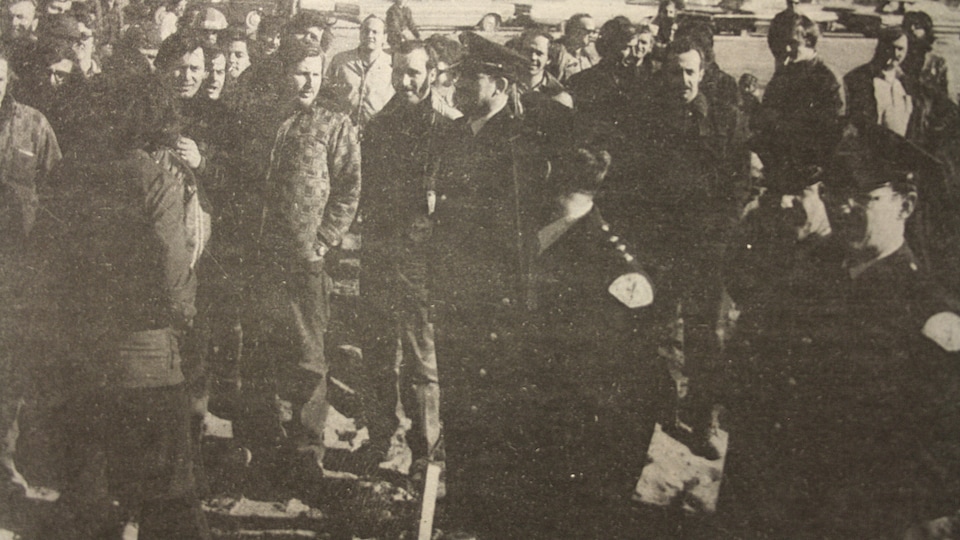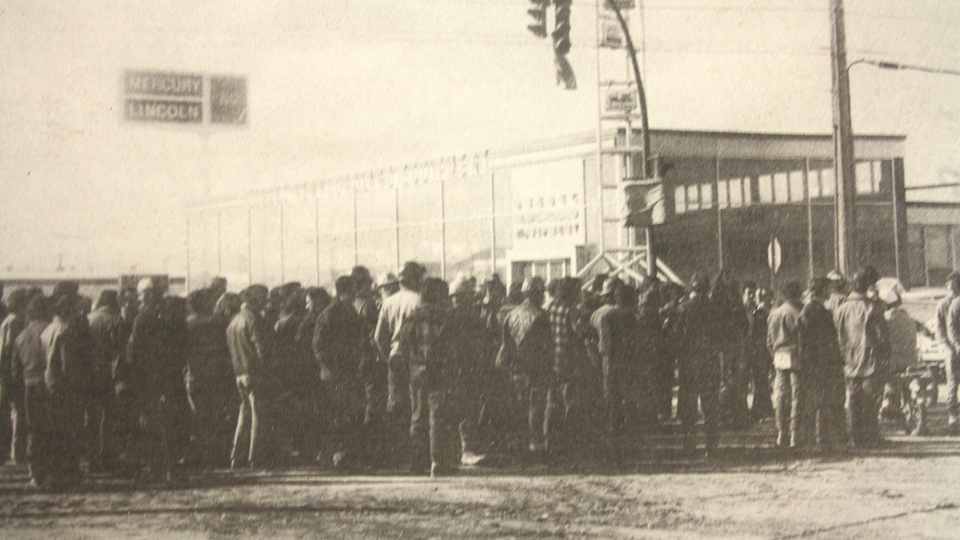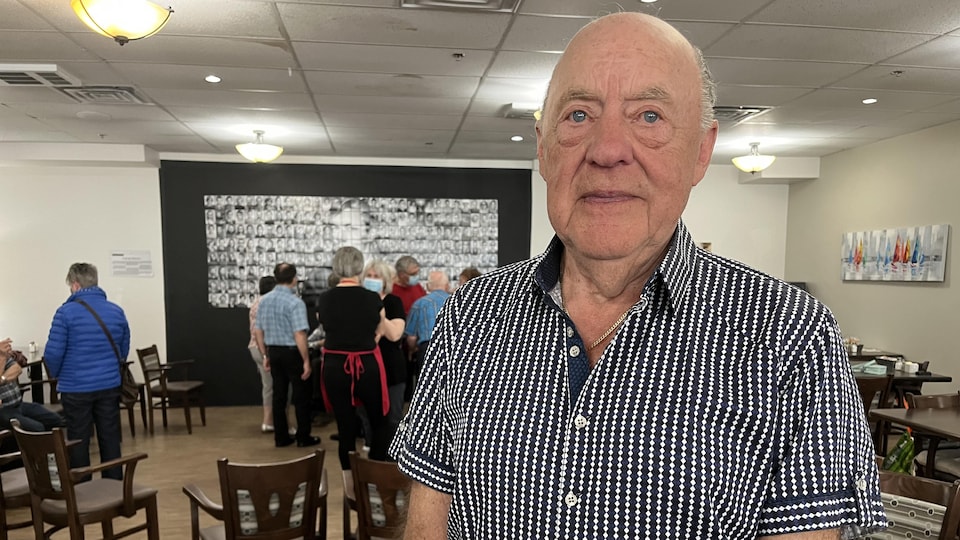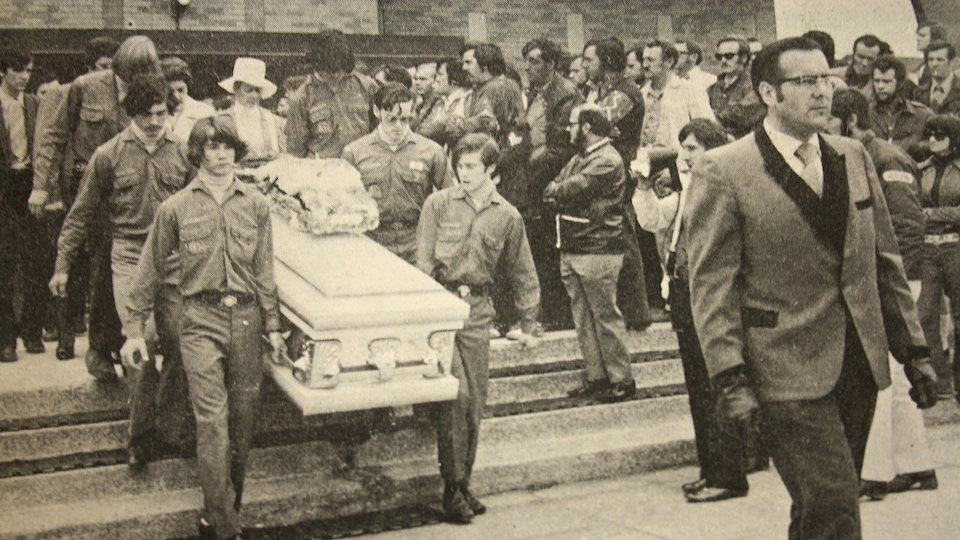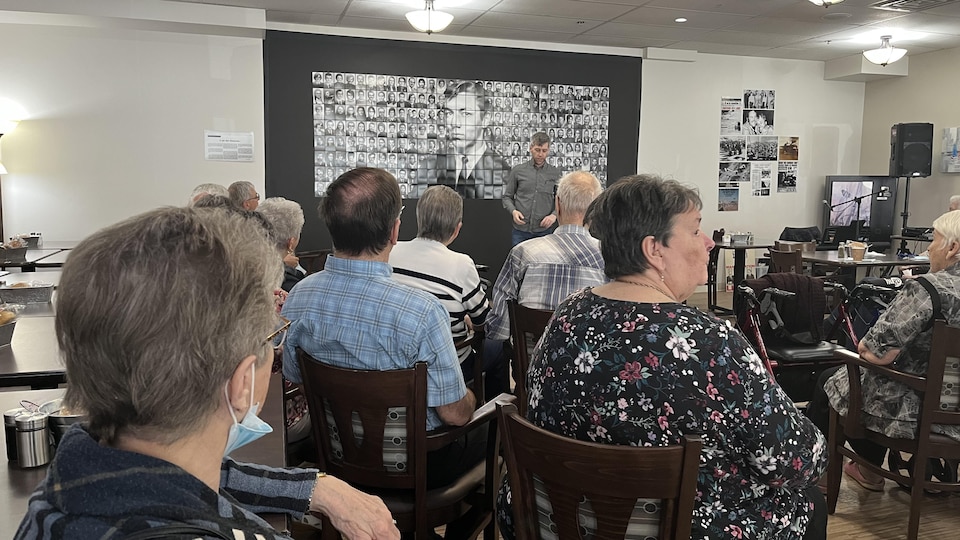One person died and more than thirty others were injured when a motorist drove into a crowd gathered in front of the Sept-Îles courthouse as part of the mobilization.
The occupation of a city in Quebec, it has rarely been seen
says Septilien unionist Réjean Langlois.
At that time, he was at the head of the United Workers Front (FTU) of Sept-Îles, an alliance founded two years earlier between the three labor unions present in the territory.
” It is this new common front that has enabled us to mobilize more unbreakably. »
Mr. Langlois remembers a social context ripe for a revolt. Quebec public service employees were in the midst of negotiating their collective agreements.
The salary issue was at the heart of the demands
he recalls. Strikes lasting one or two days had taken place in March and April.
Then came the restrictive injunction and the law adopted by the government of Robert Bourassa, which suspended the right to strike. It was the subsequent imprisonment of the three union leaders in Quebec that set the stage for the events of 1972.
While the collective agreements of public service workers had expired everywhere in Quebec, it was in Sept-Îles that a workers’ revolt flared up.
There was a general walkout all over Quebec and the strike across the province was quite hectic, but it was nothing compared to Sept-Îles
argues Mr. Langlois.
In the heat of the action
On May 10, 2022, Réjean Langlois paces in the parking lot of the palace of injustice
, as it was dubbed at the time. Fifty years earlier, hundreds of public sector workers had gathered there to demonstrate.
Huge cement pipes blocked the only access roads to Sept-Îles, at both ends of Route 138. The union members had even managed to take control of the airport, as well as the CKCN radio station.
We union members are not used to having the roads closed with bulldozers or closed at the other end with vans crossing the roads. We don’t normally do this
underlines the trade unionist.
The former PQ member for Duplessis from 1997 to 2003, Normand Duguay, was also involved in the FTU at the time. During the siege, he served as archivist and was in contact with the local radio station.
When [le FTU] wanted to distribute a document [je publiais] a press release and then forwarded it to CKCN.
He remembers that things were moving at breakneck speed during those troubled times.
” We weren’t prepared for all of this. »
Since the city of Sept-Îles was made up of workers, everyone understood what we were saying when we were talking about union issues
, explains Réjean Langlois. According to him, a significant portion of the population supported the revolt.
In the end, the workers’ siege lasted almost a week.
Union mobilization quickly ran out of steam when a motorist drove into a crowd gathered in front of the courthouse at the end of the day, May 10. The attack left one dead, Herman St-Gelais, and 35 injured.
In memory of history
Last Tuesday, around forty Nord-Côtiers gathered to commemorate the 50and anniversary of the union occupation of the city of Sept-Îles. They all responded to the invitation of the directors of an upcoming feature film which will retrace the events of May 1972 and which will be released next year.
Some still wonder about the legacy of such mobilization. We weren’t listened to
says Normand Duguay, present at the commemoration. Did it wake up the world in politics? I do not think so
.
I think the world has become aware that workers have rights and that we are able to enforce them when we take the trouble to enforce them.
indicates for his part Réjean Langlois.
Half a century later, this struggle has left an indelible mark on the history of Sept-Îles.
Reference-ici.radio-canada.ca

